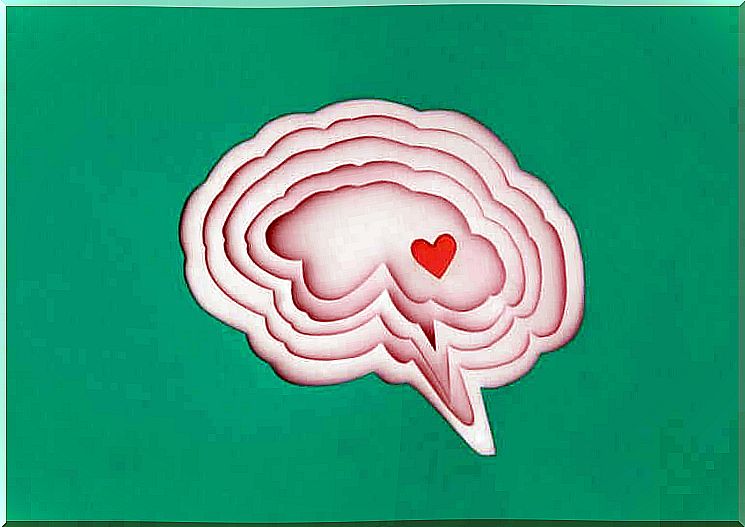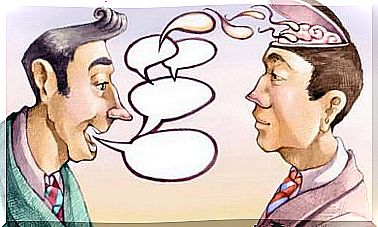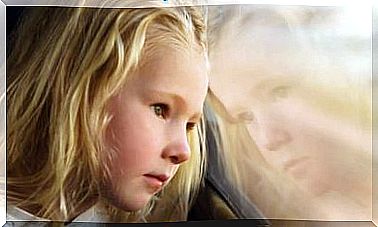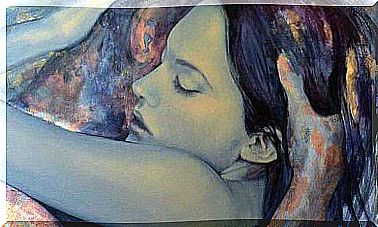Emotions: More Exactly, What Are They?

We have all wondered once what emotions are. We could define them as the “glue of life”, this invisible but intense material which connects us to our own, which allows us to take part in reality, laughing at it, admiring it, surprising us with its wonders and afflicting us with his disappointments.
Few things exude more mystery than emotions. It is true that they are part of our culture, our education, our gender or our country of origin. However, it is nonetheless true that they are already integrated into our genetic base. To demonstrate this last point, the universities of Durham and Lancaster (England) conducted a fascinating study where it could be seen that fetuses already express a small variety of emotions in the maternal womb.
Through ultrasound, we found that babies, before they were born, smile and even show expressions that make them think they are crying. This shows us that already, in the placid and silent environment of the uterus, that the human being “activates” and is formed has this instinctive and essential language which will ensure its survival. Smiling will help demonstrate well-being and satisfaction. Crying will serve as an “alarm system”. Their most basic needs will be expressed through him.
Emotions give us humanity, and although we often make the mistake of classifying them into negative and positive emotions, all are necessary and valuable. Ultimately, they perform an adaptive function and nothing can be as important as understanding them to use them “intelligently” to our benefit.

What are emotions?
Pablo is working on his thesis. When he arrives home, he goes to his room to continue his work. He sits down at the computer and opens a drawer to consult documents. In doing so, he sees in this drawer and precisely on the file he needs a big spider. He immediately closes it, terrified. Very quickly, he feels that his body temperature is rising and that his heart rate is accelerating. He lacks oxygen and the hairs on his skin stand on end.
A few minutes later, he tells himself it’s silly. That he should continue his work and waste no time. He reopens the drawer and realizes that the spider is finally not as big as he had perceived. In fact, she’s even quite small and he feels a little ashamed of her irrational fear. He takes the spider with a piece of paper and places it outside, in the garden, satisfied and laughing to himself.
This simple example shows us how in a few minutes we are able to experience a wide range of emotions: fear, shame, satisfaction and pleasure. In turn, all of them combine in three very clear dimensions:
- Some subjective feelings: Pablo is afraid of spiders and this emotion allows him to run away, to protect himself.
- A series of physiological responses: the heart rate which accelerates, the body which rises in temperature.
- Expressive behavior: Pablo immediately closed the drawer at the sight of the stimulus (the spider) which frightened him.
The hardest part about studying emotions is that they are very difficult to measure, describe or predict. Each person experiences them in a certain way, they are very particular and exclusive subjective entities. However, scientists have a much easier time with regard to the physiological response, because in this case, and regardless of age, race or culture, all react in the same way. Where adrenaline, for example, mediates any experience associated with fear, panic, stress or the need to flee.

Why do we express emotions?
Emotions have a very specific purpose: to allow us to adapt to what surrounds us in order to guarantee our survival. This is what Charles Darwin told us when he showed us that animals express emotions, and that such a gift makes it easier for them by allowing us to move forward as a species and to collaborate. between us to achieve this goal.
Darwin was probably one of the most successful figures in explaining what emotions are. However, throughout history we find more names, more and more oriented approaches give us answers on these subject theories.
The Book of Rites
The Book of Rites is a first century Chinese encyclopedia that everyone should look at once. It is part of the Confucian canon and speaks of ceremonial, social and especially all aspects of themes of human nature. If one refers to this book, it says that it is also explains what emotions are. Even more, in this work we have already described what are the basic emotions: joy, anger, sadness, fear, love and repulsion.
James-Lange theory
We are in the 19th century, and William James and Danish scientist Carl Lange explained to us that emotions depend on two factors: the physical changes that occur in our body before a stimulus and the subsequent interpretation we make of it later. .
In other words, for these authors, the physiological reaction is triggered before subjective thoughts or feelings. Something that undoubtedly has nuances and which offers us a somewhat deterministic vision.

The Schacter-Singer model
Now let’s go into the 1960s, at the prestigious Yale University, to meet two scientists: Stanley Schacter and Jerome Singer. Both refined hitherto existing theories about what emotions are a bit more and gave rise to their well-known and interesting model.
Schachter and Singer taught us that emotions can indeed arise by interpreting the peripheral physiological responses of our body, as William James and Carl Lange explained to us. However, and here’s the novelty, they can also occur as a result of cognitive assessment. Simply put, our thoughts and cognitions can also trigger an organic response and the subsequent release of a series of neurotransmitters that will activate a certain emotion and associated response.
Paul Ekman, the pioneer in the study of emotions
If we want to know what emotions are, we almost have to go through the work of Paul Ekman. When this psychologist from the University of San Francisco began to study this subject, he believed, like the majority of the scientific community, that emotions have a cultural origin.
However, after more than 40 years of studying and analyzing many cultures that make up our world, he founded a thesis that Darwin had already stated at the time: Basic emotions are innate and result from our evolution. In this way, and in his theory, Ekman established that the human being is defined by a set of fundamental and universal emotions in each of us:
- Happiness
- Anger
- Fear
- Disgust
- Surprise
- Sadness
Later, and in the late 1990s, that list grew as we studied facial expressions more deeply:
- Guilt
- Embarrassment
- Contempt
- Complacency
- Enthusiasm
- Pride
- Pleasure
- Fear
- Disgust or repulsion
- Satisfaction
- Surprise
- Shame
The Wheel of Emotions, by Robert Plutchik
Robert Plutchik’s theory explains what emotions are from a more evolutionary point of view. This doctor and psychologist gave us an interesting model in which 8 basic emotions are well identified and differentiated. All of them would have guaranteed our survival throughout our evolution. To these, we should add other secondary and even tertiary emotions, which we have developed over time to better adapt to our environment.
This interesting approach gives shape to what is already known as the “Plutchik Wheel of Emotions”. In it, we can understand how emotions vary in degree and intensity. So, and as an example, it is interesting to remember that anger is less intense than fury. Understanding this helps us better regulate our behavior.
How to achieve emotional well-being
At this point, there is one aspect to consider. It is not enough to know what the emotions are. It is not enough to know which neurotransmitter is behind every emotional state, every physiological reaction or every sensation. It’s like having an instruction manual on a machine, but not knowing how to use it in our favor.
It is essential to transform theoretical knowledge into practical knowledge. Manage our emotional universe to promote our well-being, improve the quality of our relationships, productivity, creativity; in essence, the quality of our life.
So, one way to achieve this learning about this vital tool is to learn about emotional intelligence. We’ve all heard of it, we’ve all read a book by Daniel Goleman and many articles on the subject. However, are we really applying its main strategies? Factors such as empathy, recognition of one’s emotions, attention, correct communication, assertiveness, tolerance for frustration, positivity or motivation are aspects that should never be overlooked.
Since we already know what emotions are, let’s make them the best channel to build authentic well-being, real happiness.
Bibliographical references
Ekman, Paul (2017). “The Face of Emotions” Barcelona: RBA Books.
Punset, Eduard. Bisquerra, Rafael, Bisquerra (2014). “A universe of emotions”, Planet.
Goleman, Daniel (1996). “Emotional intelligence” Madrid: Kairos.
LeDoux, Joseph (1998). The Emotional Brain: The Mysterious Foundations of Emotional Life. New York: Simon and Schuster.










